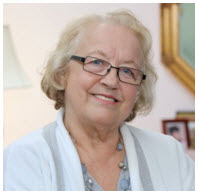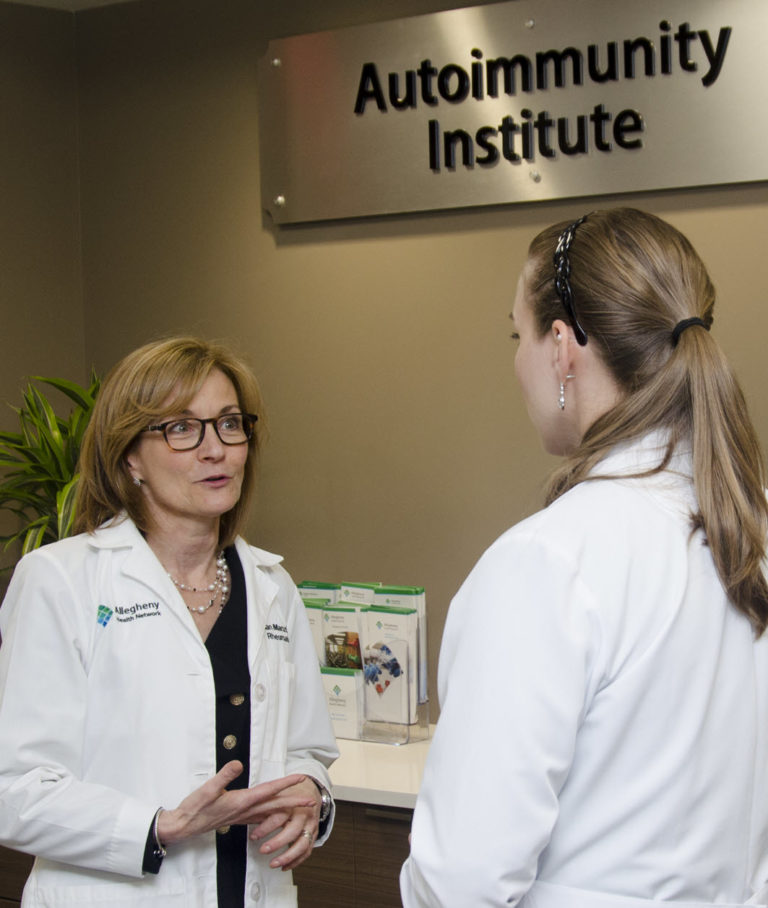“Only one third of the public can name an autoimmune disease,” says Virginia Ladd, founding president of the American Autoimmune and Related Diseases Association (AARDA). “So we still have a lot of work to do to get the word out.”

Virginia Ladd, founding president of the American Autoimmune and Related Diseases Association.
There has long been a gap in the medical research, diagnosis, and treatment of autoimmune diseases. With over 100 distinct disorders, it is a decidedly complex category of illness, and many of its diseases remain somewhat of a mystery to physicians and patients. Difficulty diagnosing autoimmune diseases, combined with the fact that many require multiple specialists to treat, have made them even more distressing for patients, and more costly for the health care system.
Ladd had all these things in mind when she founded AARDA in 1991. One of her initial goals was to see the creation of a multi-specialist center for autoimmune disease, a comprehensive model that treated patients holistically. In 2018, that vision became a reality when Allegheny Health Network (AHN) launched the world’s first Autoimmunity Institute.
Being a collaborative partner of the AHN Autoimmunity Institute is just one of many ways that AARDA and Ladd continue the mission of advancing care and treatment in the field. I spoke with Ladd to learn more about AARDA’s work, autoimmune diseases, and the AHN Autoimmunity Institute.
Emily Laubham (EL): Can you talk a bit about AARDA and its mission?
Virginia Ladd (VL): AARDA is a national nonprofit health agency. We’re dedicated to finding the cure for all autoimmune diseases, encouraging research, advocating for patients, and providing patient services.
All autoimmune diseases share a component: the immune system. It’s meant to protect your body, but instead it attacks it. We still don’t completely understand the mechanism behind it.
To aid understanding, AARDA provides patient education forums throughout the country and organizes scientific symposiums that bring together specialists to look at under-addressed issues. Those findings are published, and then we’re able to get the message out to the world. We also support researchers — young investigators in particular — because there aren’t many that go into this kind of research due to a lack of funding.
EL: What drew you to this field?
VL: I have an autoimmune disease myself — actually, I have a couple. When I was very young, I was diagnosed with lupus. I was involved with the Lupus Foundation for many years. There are also several autoimmune diseases among my siblings.
As I began to learn about autoimmune diseases, I saw that many weren’t recognized by researchers or the public as “autoimmune.” There is a tendency to look at each disease separately, which makes them seem rather rare. But they have the same mechanistic cause, and when you tie them all together, you’re talking about as many as 50 million Americans — which means autoimmune diseases are not rare at all.
I started AARDA to bring more focus to these diseases so they will be recognized and receive the research dollars and coordinated care necessary to understand, diagnose and treat them better. Autoimmune research has also usually focused on single diseases — lupus, lyme disease, celiac, Hashimoto’s, multiple sclerosis, and others. It’s been kind of siloed, so our organization promotes a more coordinated effort.
EL: What developments in autoimmune disorder research are you most excited about?
VL: Concerning treatment, the use of biologics is making the biggest difference and has been advancing over the past decade. Unlike other treatments, like corticosteroids, with biologics, you take the cells and use them to make medication that targets the specific area causing the inflammatory process.

Dr. Susan Manzi, who was instrumental in establishing the AHN Autoimmunity Institute, and also serves as medical director of the Lupus Foundation of America.
EL: Why are autoimmune diseases so difficult to diagnose?
VL: Autoimmune diseases can be very difficult to diagnose for a variety of reasons. First, there’s just not a lot of awareness. Second, they often look like other diseases. Often, a big stumbling block to getting a correct autoimmune diagnosis is just getting some physicians to even consider it.
We find that people are still not being asked about their family history of autoimmune disease like they now are with cancer, heart disease, or diabetes. Since these diseases run in families, that’s an important first clue to diagnose an autoimmune disease. Another clue might be that someone has been to a few doctors already trying to figure out what’s wrong. It can take up to four years for the average patient to get an accurate autoimmune disease diagnosis. They typically see three times as many doctors as patients without an autoimmune disease. Approximately 50 percent of women are told they’re “too concerned” with their health prior to getting diagnosed with five of the most serious autoimmune diseases.
I have a sister with an autoimmune disease who is having a very difficult time being diagnosed even though she shared the family history. She has already seen four or five doctors. She is actually going to the AHN Autoimmunity Institute now for help.
Typically, a patient ends up going from specialist to specialist trying to find out what’s wrong. It’s very frustrating for them and expensive for our health care system, because that also usually means testing over and over. They might have neurological symptoms, so they would see a neurologist. They might also have joint pain and so they’d see a rheumatologist. They have a rash, which takes them to the dermatologist. You can see why the multi-disciplinary approach at the AHN Autoimmunity Institute is so valuable. Diagnosing and treating an autoimmune disease really involves multiple specialists practicing the art of medicine, and taking time to look at the whole person.
EL: AARDA seems to prioritize collaboration, including the relationship with the AHN Autoimmunity Institute.
VL: I’m very much a believer in collaboration. I believe that when you have collaboration, two plus two makes six. It’s a great way of leveraging your work — partnering with people who have similar goals. It takes less resources and it’s easier to get the job done.
EL: How do you feel about the collaboration with the AHN Autoimmunity Institute so far?
VL: Our feedback from patients has been excellent. They will call us and thank us profusely for referring them to the Autoimmunity Institute because they finally have someone who will listen.
One of my goals with AARDA was to make sure we had a place in this country, a center, that looked at all autoimmune diseases. That’s what the Autoimmunity Institute is — diagnostic triage, research coordination, and multi-disciplinary care all in one. That’s what patients need. That’s how we’ll find answers.
We’re also pleased to provide significant funding to the Institute to study the cost of autoimmune disease. The treatment for autoimmune disease can be expensive, and insurance companies balk at providing access to those treatments. However, more coordinated approaches to care could potentially cut the costs and allow more patients to access treatment.
EL: What has been the response to the Institute from researchers and providers? Is there a sense that this model is inspiring interest?
VL: Over the years, we’ve talked with many people, including major medical and research institutes in this country. There has always been interest in autoimmune care and research, but when accountants put a pencil to it, they say it’s too expensive because it involves too many specialists.
The Institute model is still very new. Patients are discovering it and they’re liking it very much. As we prove how beneficial the Institute model is to patients — and prove that it’s viable and financially sustainable — I believe other health systems will follow.